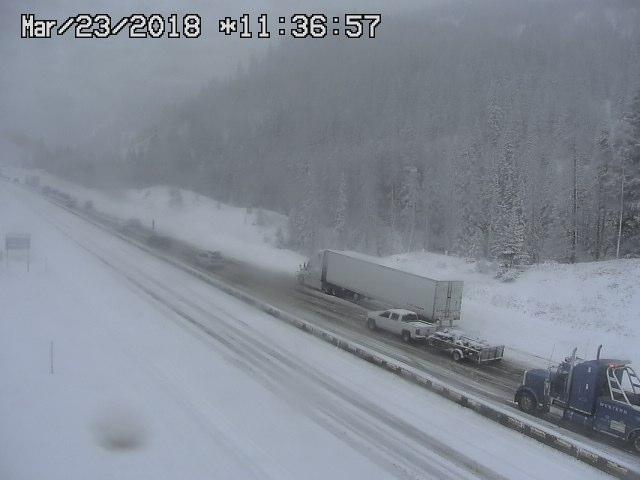Spring Breakers Heading to the Mountains may Impact Traffic Volumes

Just before noon today, travelers on I-70 near Vail and Copper Mountain were encountering icy, slushy and snow-packed roads. The spring snowstorm causing the adverse driving conditions is expected to move through and out the mountain corridor by tonight.
STATEWIDE—Spring break travelers may be pleased to learn that today's storm will be moving through the I-70 mountain corridor by day's end. The spring snowstorm is currently creating wet and slushy roads for Friday travelers, with snow-packed conditions at higher elevations near Vail and Copper Mountain.
Despite the storm moving out and clear skies forecast over the weekend, heavy traffic can be expected.
"The interstate's road surface should become dry and clear up for Saturday and Sunday," said CDOT I-70 Operations Manager Patrick Chavez. "Spring breakers, both out-of-state and local, will certainly have an impact on traffic volumes, especially during peak commuting hours when vehicles are heading west to ski areas in the morning, and then in the evening when they're headed east back home."
Safety Metering
Travelers should be aware of potential safety metering—which helps control the flow of traffic, reduce crashes and keep tunnels open for emergency vehicles—when traffic volumes increase on the corridor at Eisenhower Tunnel.
There are two types of metering:
-
Continuous-Flow safety metering occurs on the approach to the Eisenhower Tunnel. An alternating red and green stoplight cycles every four to eight seconds to keep traffic moving consistently through the tunnel, while traffic on the tunnel's east side slowly dissipates.
- On-Ramp safety metering occurs at eastbound on-ramps at Copper Mountain, Frisco, Silverthorne and Loveland. This type of metering may be more familiar, occurring on highway and interstate on-ramps throughout most metro areas.
While drivers may be stopped an average of 20 minutes with continuous-flow safety metering, the actual delay for total travel time is only around three to five minutes. This is because eastbound traffic on the other side of the Eisenhower Tunnel is still moving slowly and cars usually quickly catch up with the flow of traffic. Learn more.
Stay Informed
- Travel conditions: COtrip.org
- See scheduled lane closures.
- Sign up for project email alerts
